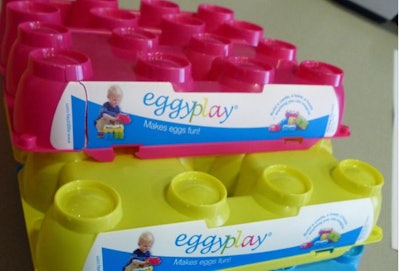
When I used to travel (in past tense, because it is not possible for the time being), I always liked to go to markets and supermarkets to see the chicken and egg products and their packaging in different countries. I have made a modest collection of photos furtively taken with my cell phone in supermarkets, which more than once have been used on this website as illustrations. It is surprising to see the materials used, printed information, graphic design, and photography, as well as type of packaging It is also interesting to see the imitations of the American model, so far from the Latin American idiosyncrasy.
I was reading the other day about the difference in milk, which in the United Kingdom is sold mostly fresh in transparent plastic containers, while in Spain it is sold ultra-pasteurized in cartons. This is because 50 years ago, milk distribution was better in the U.K. than in Spain, forcing the later to process and pack for long-lasting periods. And the habit stayed.
In this way, the consumer acquires habits, which then remain. I was thinking about how eggs sold by the kilo are so deeply rooted in many countries, rather than in packaging per dozen, a model that is more common in supermarkets.
Consider chicken, which in several countries of Latin America continues to be sold live or fresh, hopefully surrounded by ice (not frozen), as in Mexico. Many people consume it without even knowing the brand or origin, and therefore there is zero traceability.
That image of eating fresh chicken, just slaughtered or that you can see arriving in ice, without packaging, has remained in many Latin American countries as a sign of that: fresh chicken. Besides the fact that people prefer it this way, it is certainly cheaper, as there is no cost of processing and packaging. It is not value-added.
The small part that is sold in packaging, either under the brand of the producer or processor, or from the supermarket itself, remains for the strata with the greatest purchasing power of the Latin American society. And the way things are going, I see no changes.
It will be interesting to see what it will be in the medium or long term, especially if we are talking about hygiene. Otherwise, it will remain the same as long as the economic situation does not change.
What do you think?

















